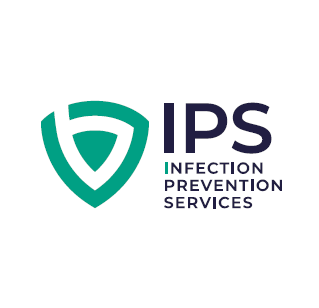A Post Antibiotic Apocalypse: What Could Happen In A World Without Antibiotics
Imagine The Unimaginable: A World Without Antibiotics
Think for a moment how often we take antibiotics for granted. An annoying throat infection, a minor skin wound that's getting a little red and puffy – often, our first thought is, "maybe I need some antibiotics." These medications have become such a cornerstone of modern healthcare that it's hard to picture life without them. But what if the security of a “cure” was gone? Imagine a world where these miracle drugs no longer worked, where even the simplest infections could once again become potentially fatal. This isn't a far-fetched dystopian fantasy; it's a very real possibility if we fail to act on antibiotic resistance, a challenge largely fueled by the failure of what we call antimicrobial stewardship (AMS).
A Glimpse Into The Past: The Pre-Antibiotic Era
The Silent Threat: Understanding Antibiotic Resistance
The Dire Consequences: Life In A Post-Antibiotic World
Imagine returning to a time where a minor infection could have devastating consequences. Surgeries, even routine ones, would become incredibly risky due to the high chance of an untreatable post-operative infection. Procedures like organ transplants and chemotherapy, often relying on antibiotics to protect vulnerable patients from infection post-surgery or during treatment, could become too dangerous to consider. Childbirth would again carry a significant risk of infection for mothers and newborns. We could see a resurgence of diseases that were once well-controlled, like tuberculosis, with treatment options severely limited. Some experts predict that if we fail to get antibiotic resistance under control, we could face a future where 10 million more people a year could die by 2050 from infections that are currently treatable. Some hospitals are already having to make the difficult decision as whether to offer certain treatments, like cancer therapy, due to the high risk of untreatable infections. This isn't just a medical concern; it's a societal one that could have a profound economic impact.
The Failure Of Stewardship: Why We Face This Risk
Outside of hospitals, the issue is compounded by patients expecting "a pill for every ill", sometimes leading to doctors prescribing antibiotics even for viral infections where they are ineffective. (Remember the days when your GP had his prescription pad already filled out with a broad-spectrum antibiotic for you to collect?). Patients may also not complete their prescribed course of antibiotics once they start feeling better, which is a major problem because it allows some bacteria to survive and potentially develop resistance. Furthermore, the use of antibiotics in agriculture to promote growth in livestock has been a significant contributor to the rise of antibiotic-resistant organisms that can then spread to humans. The perception of antibiotics as cheap and readily available "throwaway items" also fosters a cavalier attitude towards their use.
Taking Action
- Preserving the Power of Antibiotics: The good news is that it's not too late to make a difference. Effective antimicrobial stewardship is crucial, and it requires a multi-pronged approach involving healthcare professionals, patients, and policymakers.
- For Nurses and Other Healthcare Professionals: We need to champion the appropriate use of antibiotics in aged care as well as other healthcare institutions, adhering to guidelines and questioning unnecessary prescriptions. Educating patients on the importance of completing their full course of antibiotics, even if they feel better, is vital. We must also advocate for and participate in antimicrobial stewardship programs within our facilities and health institutions. Staying informed about local resistance patterns and promoting infection prevention measures like hand hygiene are the key.
- For Patients and the Public: Understanding that many common infections, especially viral ones, do not require antibiotics, is the first step. We need to trust our healthcare providers' advice and not pressure them for antibiotics where they are not indicated. If antibiotics are prescribed, it's crucial to take the full course as directed, even if you start feeling better. Practicing good hygiene, such as frequent handwashing, can help prevent infections from spreading in the first place.
- For Policymakers and the Pharmaceutical Industry: Strengthening surveillance and monitoring of antibiotic resistance is essential to inform public health policies. We need to incentivise and support research and development for new antibiotics and alternative therapies to combat resistance. Exploring strategies like reserving new antibiotics as a "drug of last resort" can help preserve their effectiveness. Addressing the use of antibiotics in agriculture, particularly for growth promotion, through regulation and alternative practices is also crucial.
Our Collective Responsibility: Securing The Future Of Antibiotics
Conclusion: Preserving Our Future
To
continue this vital conversation and delve deeper into the strategies we can
adopt, explore our related posts on antibiotic stewardship or consider sharing
your thoughts.
Lyndon Forrest
I am a passionate and visionary leader who has been working in the field of infection prevention and control in aged care for almost 30 years. I am one of the co-founders and the current Managing Director and CEO of Bug Control New Zealand and Australia, the premium provider of infection prevention and control services in aged care. I lead a team that is driven by a common purpose: to help aged care leaders and staff protect their residents from infections and create a healthier future for them.
I am building a business that focuses on our clients and solving their problems. We are focused on building a world-class service in aged care. We focus on being better, not bigger, which means anything we do is for our clients.
Erica Callaghan
Erica Callaghan is a dedicated professional with a rich background in agriculture and nutrient management. Growing up on her family's farm in Mid Canterbury, she developed a deep passion for farming. She currently resides on her partner's arable property in South Canterbury.
In 2017, Erica joined the Farm Sustainability team, focusing on nutrient management and environmental stewardship. In February 2024, she became the Manager of Marketing and Sales at Bug Control New Zealand - Infection Prevention Services, where her passion now includes improving infection prevention outcomes.
Outside of work, Erica loves cooking and traveling, often combining her culinary interests with her explorations in Italy and Vietnam. She enjoys entertaining family and friends and remains actively involved in farm activities, especially during harvest season.
Toni Sherriff
Toni is a Registered Nurse with extensive experience in Infection Prevention and Control. Her career began as a kitchen hand and caregiver in Aged Care facilities, followed by earning a Bachelor of Nursing.
Toni has significant experience, having worked in Brisbane’s Infectious Diseases ward before returning home to New Zealand, where she continued her career as a Clinical Nurse Specialist in Infection Prevention and Control within Te Whatu Ora (Health NZ).
Toni brings her expertise and dedication to our team, which is instrumental in providing top-tier infection prevention solutions to our clients.
Julie Hadfield
Julie is experienced in Accounts & Payroll Administration & after a long career in both the Financial & Local Government Sectors, is now working with our team. Julie brings her strong time management & organisational skills to our team, which is important to keep the company running in the background to enable the rest of our team to provide top notch service to all of our clients.
Andrea Murray
I attended Otago University in NZ and graduated as a Dental Surgeon. After 40 years in the profession, I retired in 2022. Infection prevention knowledge was part of everyday practice, dealing with sterilisation, hand hygiene, and cleaning.
Before retiring, I began doing some editing and proofreading for Bug Control as I am interested in the subject and in the English language. During the COVID-19 lockdown, I attended the ACIPC course "Introduction to Infection Prevention and Control", which increased my interest in the subject. I now work part-time as the Content Editor for the company.
Princess
Princess began her career as a dedicated Customer Service Representative, honing her communication and problem-solving skills. She later transitioned into a Literary Specialist role, where she developed a keen eye for detail. Her journey then led her to a Sales Specialist position, where she excelled in client relations.
Now, as a Customer Support professional in Infection Prevention Services. Princess focuses on ensuring customer satisfaction, building loyalty, and enhancing the overall customer journey.
Dianne Newey
With over 35 years of experience as a Registered Nurse, I'm now applying all my experience and skills as a Senior Infection Prevention and Control Consultant with Bug Control Infection Prevention Advisory Services.
This is through IP&C education, IP&C environmental audits and reports, IP&C policy and procedure review and development and consultancy on infection prevention and control issues. When I’m not working, I spend time with my family and in my garden, where I grow all my own veggies.
Caoimhe (Keva) Stewart
Caoimhe is the Manager of Customer Service at Bug Control | Infection Prevention Services, where she ensures that learners have a seamless and supportive experience. With her previous experience as a Registered Nurse in both the UK and Australia, Caoimhe brings a deep understanding of healthcare to her role. Before joining Bug Control IPS Services, she worked in a variety of nursing settings, including Occupational Health, Palliative Care, and Community Nursing, providing her with the ability to empathise with learners and understand the challenges they face.
Bridgette Mackie
Bridgette is an experienced New Zealand Registered Nurse, qualified Healthcare Auditor, and Healthcare Educator with a strong background in clinical quality, competency assessment, and infection prevention. She has led large-scale OSCE and CAP training programmes for internationally qualified nurses, developed sector-specific educational resources, and coordinated HealthCERT audit preparation in the surgical sector.
Known for her engaging teaching style and genuine passion for supporting learners, Bridgette excels at making complex topics accessible and relevant. She blends operational leadership with a deep commitment to professional development and safe, effective practice.

